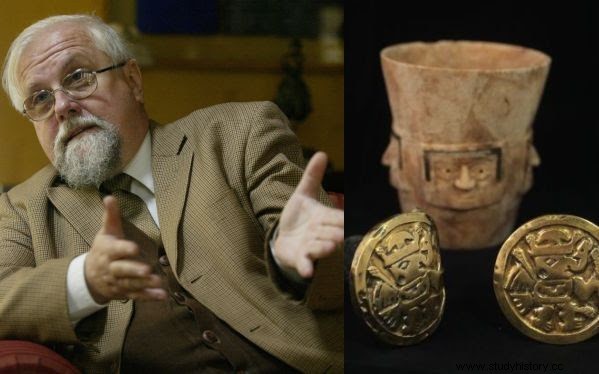 The researcher Krzysztof Makowski What ideas can he give us to understand the Wari culture? First, we must know the importance of Wari in the texts of my colleagues and myself, since the time of Max Uhle. There is a complete consensus that in the period between the years 600 and 1000 of our era, there was a sudden change in the history of Andean civilization.
The researcher Krzysztof Makowski What ideas can he give us to understand the Wari culture? First, we must know the importance of Wari in the texts of my colleagues and myself, since the time of Max Uhle. There is a complete consensus that in the period between the years 600 and 1000 of our era, there was a sudden change in the history of Andean civilization.Did the cultures of the north influence those of the south? Yes, there were northern influences in the south; for example, the presence of the Cupisnique culture in Ayacucho. However, these are exceptions. There were contacts, but this did not affect the development of the areas. Cases of obsidian and spondylus exchange between northern and southern cultures have been found. There was a relationship between them, but this does not mean that the developments were profoundly influenced.
When are the most profound changes noticed? From 600 to 800 AD, this situation changes completely and dramatically in technologies, ways of building, ways of conceiving the ruler's residence, clothing, headdresses, ways of weaving and dyeing, the styles of making objects, the spread of knowledge of bronze, the rise of silver production. All this knowledge –which originated in the south– was imposed in the north and this is clearly seen in the Mochica sites.
In what elements were the changes reflected? All power symbols change. The kero – a glass used in the most important rituals – prevails and replaces the Moche cup; the southern shaped tumi takes the northern tumi out of production and use.
Was Wari an empire like that of the Incas? From my perspective, the Waris were a confederation, as is every empire. There was a lineage, a leader, such as Manco Cápac. And he – thanks to his military power – manages to bring together many people who by will or by force.
What definition do you give to the Huarmey Castle cultural complex? Our site is the first case of a Wari capital found on the north coast. As we know, the main capital of the empire is in Cerro Baúl (Arequipa).
Can the discovery change the way of seeing history? I would say that it contributes a lot and will change the minds of researchers and also school history, after a well-deserved debate.
Why is it stated that Huarmey Castle is Wari? Because of the way the burial chambers are built, with the plastered floors and the rigid octagonal organization chart (walls that intersect as if they were a honeycomb) that is typically Wari from the mountains. This style has parallels in Conchopata and in Huari itself. The difference is in the construction material. It was adobe because local people built it. In the mountains it would have been done with stone. Another detail is that the buried individuals are not calmly spread out like the Moche, but seated in the typical Wari position and wrapped in few turns.
Can we imagine what the conquest of the Waris in the north was like? They did not do it with armor but on foot. They entered through the weak places. It is no coincidence then that the Waris pressed along the Moche frontier, perhaps later through Casma, through the La Leche valley, and in Piura, where there is also Mochica evidence.
SOURCE:http://elcomercio.pe/actualidad/1596505 /news-discovery-wari-huarmey-will-change-school-texts
